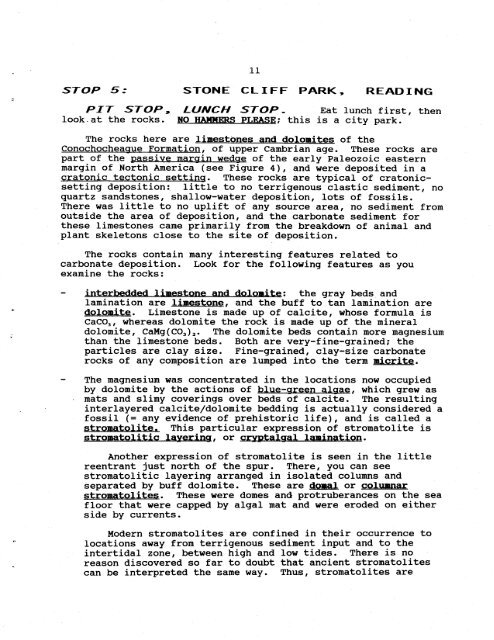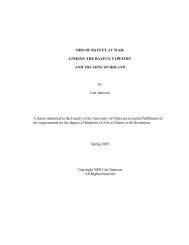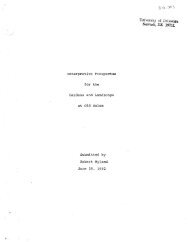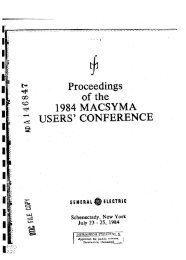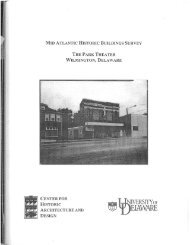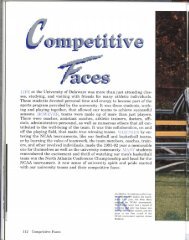FTELD TRIP ACROSS THE APPALACHTAN OROGENIC BELT
FTELD TRIP ACROSS THE APPALACHTAN OROGENIC BELT
FTELD TRIP ACROSS THE APPALACHTAN OROGENIC BELT
Create successful ePaper yourself
Turn your PDF publications into a flip-book with our unique Google optimized e-Paper software.
11<br />
STOP 5: STONE CLIFF PARK, READ I NG<br />
PfT STOP, LLTNCH STOP - Eat tunch first,<br />
Iook.at the rocks. l{O IIAtll{ERS PtEjtSE; this is a city park.<br />
then<br />
The rocks here are limestirnes and dolonites of the<br />
Conochocheague Fornation, of upper Cambrian age. These rocks are<br />
part of the passive margin wedge of the early Paleozoic eastern<br />
margin of North America (see Figure 4), and were deposited in a<br />
cratonic tectonic setting. These rocks are typical of cratonicsetting<br />
deposition: Iittle to no terrigenous clastic sediment, ro<br />
quartz sandstones, shallow-water deposition, lots of fossils.<br />
There was little to no uplift of any source arear Do sediment from<br />
outside the area of deposition, and the carbonate sediment for<br />
these limestones came prinarily from the breakdown of animal and<br />
plant skeletons close to the site of deposition.<br />
The rocks contain many interesting features related to<br />
carbonate deposition. Look for the following features as you<br />
examine the rocks:<br />
interbedded linestone and dolonite: the gray beds and<br />
lanination are linestone, and the buff to tan lanination are<br />
dolonite. Limestone is made up of calcite, whose formula is<br />
CaCO' whereas dolomite the rock is made up of the mineral<br />
dolomite, CaMg(Cor)r. The dolonite beds contain more magnesium<br />
than the lirnestone beds. Both are very-fine-grained; the<br />
particles are clay size. Fine-grained, clay-size carbonate<br />
rocks of any composition are lunped into the term uicrite.<br />
The magnesium was concentrated in the locations now occupied<br />
by dolornite by the actions of blue-green algae, which grew as<br />
. mats and sliury coverings over beds of calcite. The resulting<br />
interlayered calcite/dolomite bedding is actually considered a<br />
fossil (= any evidence of prehistoric life), and is called a<br />
stromatolite. This particular expression of stromatolite is<br />
stromatol-itic layering, or crlTrtalgal lanination.<br />
Another expression of stromatolite is seen in the little<br />
reentrant just north of the spur. There, you can see<br />
stromatolitic layering arranged in isolated columns and<br />
separated by buff dolourite. These are donal or colrunar<br />
stromatolites. These were domes and protruberances on the sea<br />
floor that were capped by algal mat and were eroded on either<br />
side by currents.<br />
Modern stromatolites are confined in their occurrence to<br />
Iocations away from terrigenous sediment input and to the<br />
intertidal zone, between high and low tides. There is no<br />
reason discovered so far to doubt that ancient stromatolites<br />
can be interpreted the same vtay. Thus, stromatolites are


